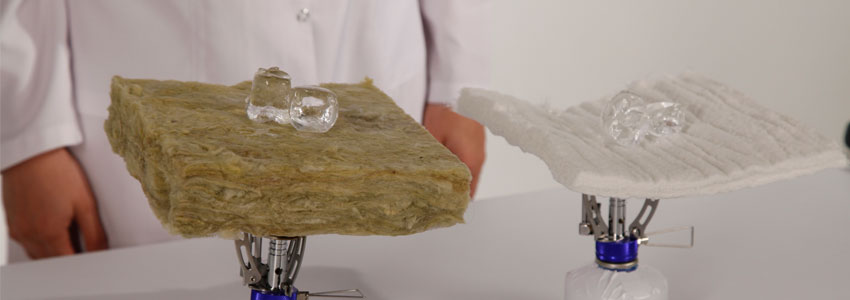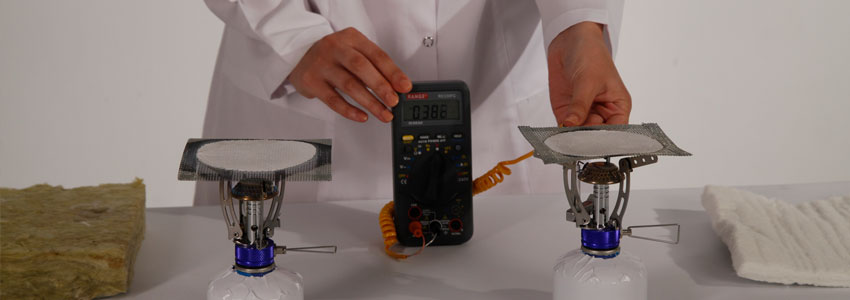Thermal Insulation
Aerogel is known as the world’s best thermal insulation material.
Thanks to its microporosity, Aerogel stands out as an efficient thermal insulator.
Aerogel’s nano-cell diameters are between 50-100 nm and these cells limit the movement of air molecules.
When air molecules interact less, heat flow is reduced.
This porosity limits heat transfer by convection and conduction.
Thermal conductivity consists of three factors: conduction, convection and radiation. Levron Aerogel contains more than 90% air and has an extremely low weight and therefore excellent thermal conductivity.
The thermal conductivity is between 0.012 – 0.016 W/m.K and the heat capacity is 1000 J/kg/K.
In one experiment, 6 cm rock wool and 2 cm Levron Aerogel Felt were tested under identical conditions.
The ice cubes on the rock wool and Levron Aerogel Felt melted at approximately the same time.
Interestingly, the melting rate increased rapidly after the rock wool was wetted.
The melting rate of the ice cubes on the Levron Aerogel Felt remained constant.
The melting water moistened the rock wool and increased the heat flow rate.
As is well known, rock wool or similar traditional insulators lose their efficiency when wet.
Levron Aerogel Felt has a great advantage at this point because it is super hydrophobic.
When the same rock wool and Levron Aerogel Felt are used in a new experiment with new pairs of ice cubes, it is likely that the ice cubes on the rock wool will melt twice as fast.
This is due to the wet stone wool.

